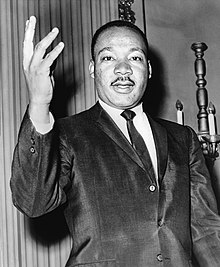I rarely watch television during the day but I have heard "The View" (ABC 2012) is a good show. I chose to record the show to observe the communication dynamics of the cast. The participants on the day I recorded the show were:

Sherri Shepherd

Joy Behar

Elisabeth Hasselbeck

Whoopi Goldberg
Barbara Walters is also a member of the cast however she was absent the day this was recorded.

I recorded a segment called "Hot Topics". The beginning of the show starts with conversations about subjects that interest the public. With the sound off I observed the following:
- Sherri was saying something
- Whoopi lifted her hand toward Sherri, who stopped speaking and Whoopi said something.
- The camera focused on Whoopi's face, who looked angry.
- Elisabeth started speaking and as she spoke, she tapped her index finger on the table. She leaned forward and moved her eyes from one cast member to the other. Elisabeth looked angry.
- Joy was shaking her head while Elisabeth was talking. Joy crossed her arms in front of her chest and leaned back from the table. Joy looked upset.
- Whoopi raised both arms in front of her gesturing towards Sherri.
- Sherri smiled and said something. Sherri looked happy.
In silence, the exchanges looked heated and volatile. The cast members seemed to be angry with each other.
When I listened to the conversation, some of my assumptions were valid and some were not.
The "Hot Topic" was politically based, making the content of the message important to the listeners (O'Hair, Friedrich & Dixon, 2011), which can stir the passions of people less outspoken than this group.
They were discussing how Gov. Mitt Romney's statement about firing people was taken out of context.
- Sherri was asking how they felt about the statement when Whoopi interrupted her in mid sentence.
- Whoopi was angry that the statement had been taken out of context.
- Elisabeth was making points, as she tapped the table on the good things Gov. Romney had accomplished.
- Joy was upset that someone running to be a candidate for the Presidency would even say anything abut firing people in these economic times.
- Whoopi acknowledged she had interrupted Sherri before she finished her thought and tossed the conversation back to her, which made her smile.
There is a close relationship between these women. They are passionate and outspoken and they respect each other. I didn't observe cues showing disrespect or ineffective listening (O'Hair., Friedrich& Dixon, 2011).
There were no side conversations, rolling of eyes, or making "light" of something one of them stated. They listened intently and responded appropriately, demonstrating they heard what was being said. I learned that what may look like an argument between people in a group may be a passionate exchange of ideas and thoughts when you actually listen. Tone doesn't always indicate intent.
References
O'Hair, D. Friedrich, G.W. & Dixon, L.D. (2011). Strategic communication in business and the professions. Boston, MA: Allyn & Bacon
Walters, B. (Executive Producer). (2012). "The View" (Television program) Season 15 Episode 0112
January 9, 2012 New York: American Broadcasting Channel
